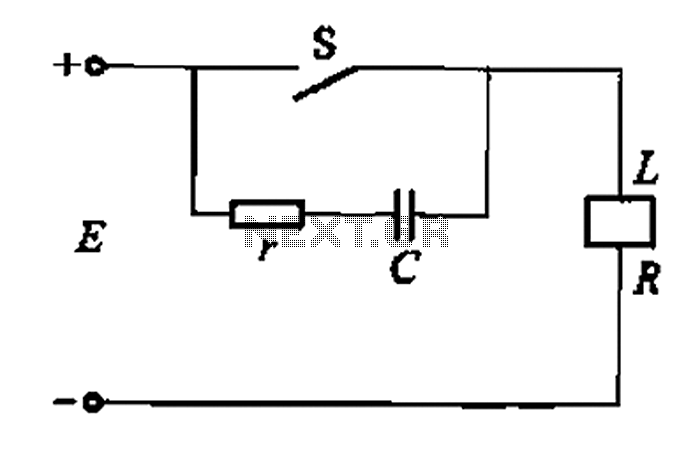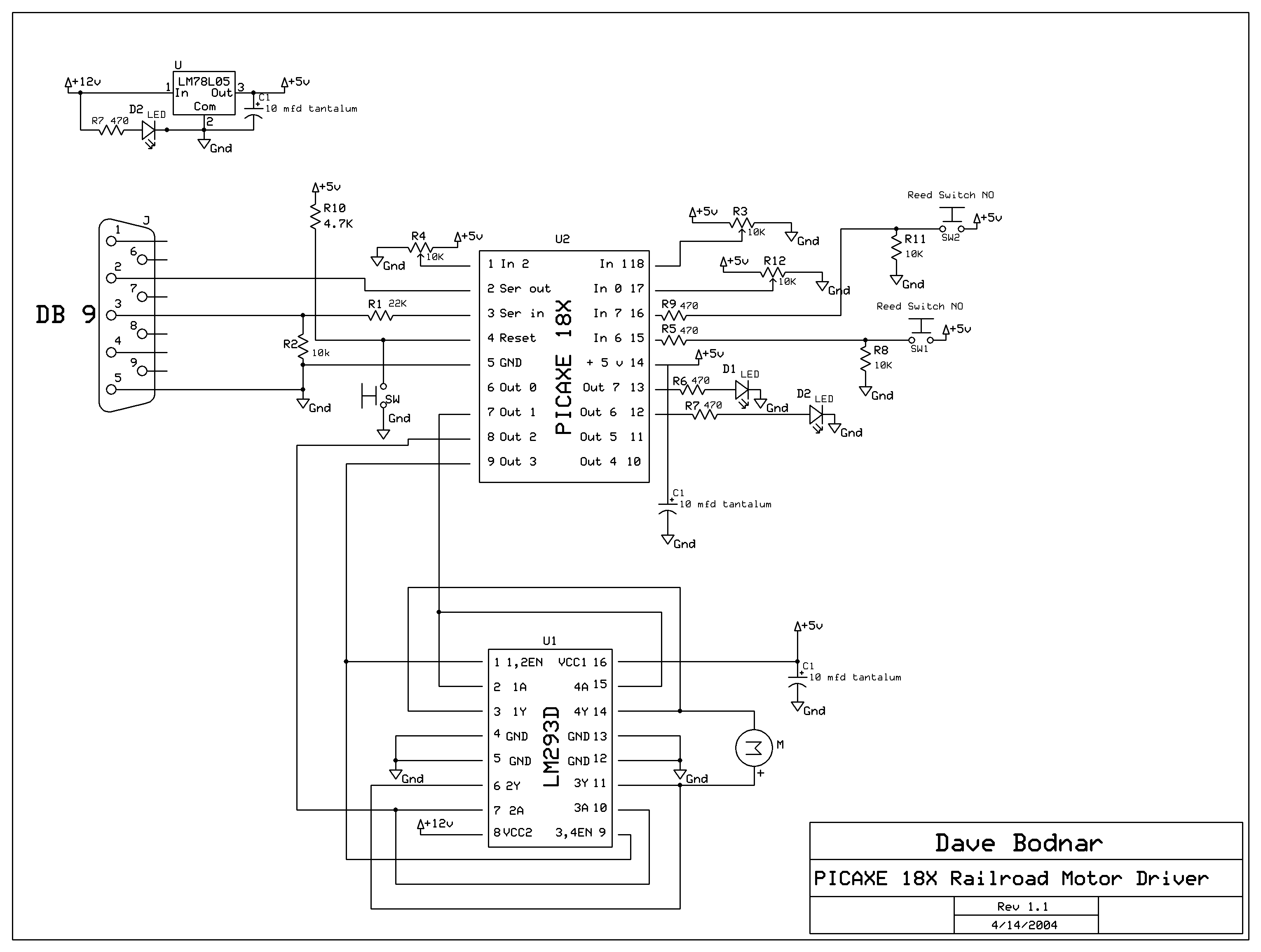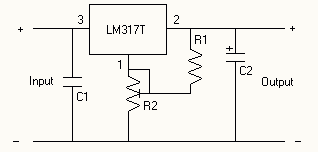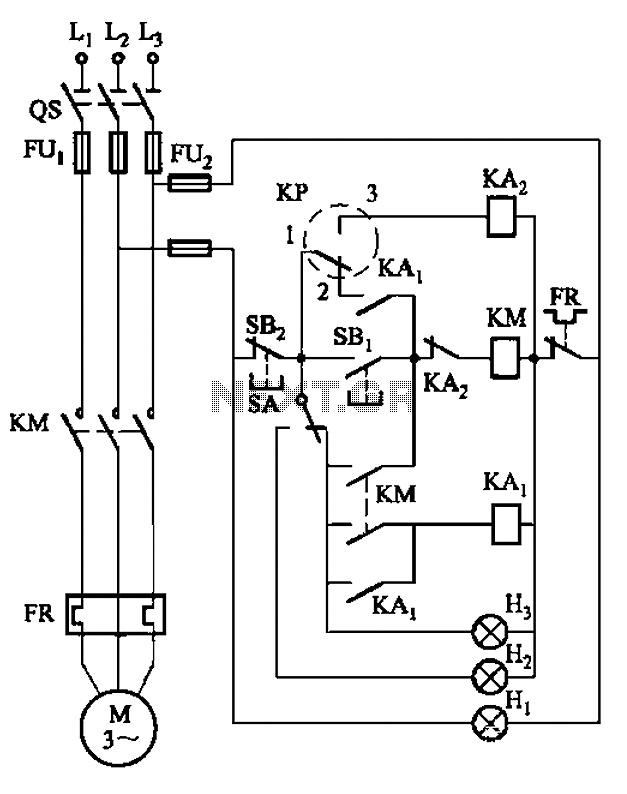
Consumers spark a resistor-capacitor circuit

A resistor-capacitor circuit designed to prevent spark blowout. The coil's magnetic energy is converted into electrical energy stored in the capacitance C, effectively suppressing sparks and enhancing safety. The circuit is capable of functioning normally even with reverse polarity. The resistor R typically ranges from 50 to 100 ohms, while the capacitance C varies from 0.1 to 2 microfarads. These values can be determined through empirical methods.
The resistor-capacitor (RC) circuit serves a critical role in managing the transient voltages that may occur during the operation of inductive loads, such as coils or motors. When the coil is energized, it generates a magnetic field, and upon deactivation, this magnetic energy needs to be dissipated safely. The RC circuit facilitates this by converting the magnetic energy into electrical energy, which is then stored in the capacitor. This process helps to minimize the occurrence of voltage spikes or arcs, commonly referred to as spark blowout, which can lead to damage or failure of electronic components.
In this configuration, the resistor R is essential for controlling the rate at which the capacitor C charges and discharges. The typical resistance range of 50 to 100 ohms is chosen to balance the circuit's response time and the energy dissipation required to protect downstream components. The capacitor's value, ranging from 0.1 to 2 microfarads, is selected based on the specific application requirements, including the frequency of operation and the expected load characteristics.
The circuit's ability to operate under reverse polarity conditions is a significant advantage, ensuring reliability and functionality in varied scenarios. This feature is particularly useful in applications where the power supply may be connected incorrectly, as it allows the circuit to continue functioning without interruption.
Overall, the design and implementation of this RC circuit are based on empirical data, which can be adjusted according to the specific needs of the application. Proper selection of resistor and capacitor values is crucial for achieving optimal performance and ensuring the longevity of the electronic system.A resistor-capacitor circuit spark blowout. It is the coil magnetic energy is converted to electrical energy capacitance C, so as to eliminate fire took aim, eliminating the sp ark better. Power reverse polarity, the circuit can still work normally. R usually take 50 ~ lOOf2, C takes 0.1 ~ 2VF. It can be determined empirically.
The resistor-capacitor (RC) circuit serves a critical role in managing the transient voltages that may occur during the operation of inductive loads, such as coils or motors. When the coil is energized, it generates a magnetic field, and upon deactivation, this magnetic energy needs to be dissipated safely. The RC circuit facilitates this by converting the magnetic energy into electrical energy, which is then stored in the capacitor. This process helps to minimize the occurrence of voltage spikes or arcs, commonly referred to as spark blowout, which can lead to damage or failure of electronic components.
In this configuration, the resistor R is essential for controlling the rate at which the capacitor C charges and discharges. The typical resistance range of 50 to 100 ohms is chosen to balance the circuit's response time and the energy dissipation required to protect downstream components. The capacitor's value, ranging from 0.1 to 2 microfarads, is selected based on the specific application requirements, including the frequency of operation and the expected load characteristics.
The circuit's ability to operate under reverse polarity conditions is a significant advantage, ensuring reliability and functionality in varied scenarios. This feature is particularly useful in applications where the power supply may be connected incorrectly, as it allows the circuit to continue functioning without interruption.
Overall, the design and implementation of this RC circuit are based on empirical data, which can be adjusted according to the specific needs of the application. Proper selection of resistor and capacitor values is crucial for achieving optimal performance and ensuring the longevity of the electronic system.A resistor-capacitor circuit spark blowout. It is the coil magnetic energy is converted to electrical energy capacitance C, so as to eliminate fire took aim, eliminating the sp ark better. Power reverse polarity, the circuit can still work normally. R usually take 50 ~ lOOf2, C takes 0.1 ~ 2VF. It can be determined empirically.





